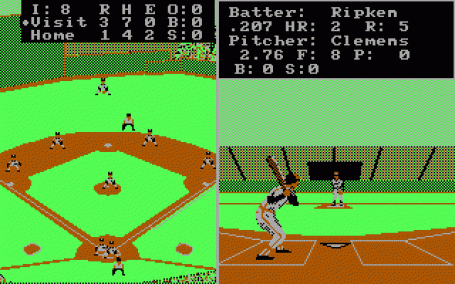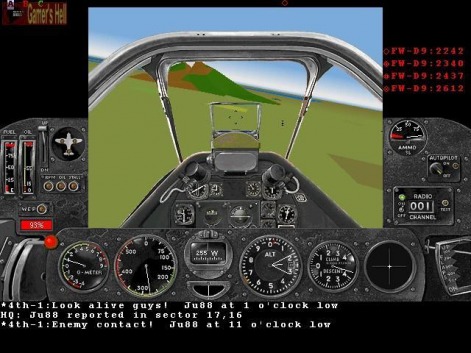First Generation Consoles
The development of university mainframe games started in the 1970’s. These games were mainly made by students who wrote these games on the expensive university computers, thus causing many games to never go on the market for no one at home had such high-tech computers. The three most important distribution paths of the time were the PLATO system, the DECUS, and Hewlett-Packard. PLATO was an educational computing environment designed at the University of Illinois which ran on mainframes made by Control Data Corporation; the games were interchangeable between PLATO systems. The DECUS was the user group for computers made by DEC (Digital Equipment Corporation), which distributed games that would run on various DEC computers. Only some games were written for Hewlett-Packard minicomputers such as the HP2000 but it was still quite well known.
1971
The first computer baseball game is written on a DEC PDP-10 mainframe at Pomona College by Don Daglow. Players could either play single games or an entire season. Later on Daglow published a better version of the game called Earl Weaver Baseball in 1987.
Also this year, Mike Mayfield creates Start Trek on a Sigma 7 minicomputer at the University of California. This was the first major game to be ported across hardware platforms by students. Throughout the decade many more Star Trek games were produced.
1972
Hunt the Wumpus, a hide-and-seek game is written by Gregory Yob for the PDP-10; this could be considered the first ‘text adventure’.
1974
The first early multi-player 3D first-person shooters are created; Maze War (on the Imlac PDS-1 at the NASA Ames Research Center in California) and Spasim (on PLATO).
1975
The first modern text adventure game, Adventure, later called Colossal Cave is written by William Crowther on the FORTRAN for PDP-10. The player controls the game through simple sentence commands and receives descriptive text output. It was then re-written on PLATO by some students, which was when it really became popular.
Also this year, Daglow wrote the first role-playing game on PDP-10 mainframes, Dungeon. It was inspired by the still popular board game Dungeons & Dragons. It was the first game t use life of sight graphics; it took in different factors such as light or darkness and the difference in visions between the species one could interpret.
1977
The first version of Air a text air combat game is written by Kelton Flinn and John Taylor. This was the inspiration to the first ever graphical online multi-player game Air Warrior. Flinn and Taylor also founded the first successful online game company, Kesmai.
1980
Rogue is released on BSD Unix after two years of work by Michael Toy, Glenn Wichman and Ken Arnold. It inspired many rogue like games ever since its release. Like Dungeon it displayed dungeon maps using text characters, but the maps changed for every new game so one could never cheat.
1971
The first computer baseball game is written on a DEC PDP-10 mainframe at Pomona College by Don Daglow. Players could either play single games or an entire season. Later on Daglow published a better version of the game called Earl Weaver Baseball in 1987.
Also this year, Mike Mayfield creates Start Trek on a Sigma 7 minicomputer at the University of California. This was the first major game to be ported across hardware platforms by students. Throughout the decade many more Star Trek games were produced.
1972
Hunt the Wumpus, a hide-and-seek game is written by Gregory Yob for the PDP-10; this could be considered the first ‘text adventure’.
1974
The first early multi-player 3D first-person shooters are created; Maze War (on the Imlac PDS-1 at the NASA Ames Research Center in California) and Spasim (on PLATO).
1975
The first modern text adventure game, Adventure, later called Colossal Cave is written by William Crowther on the FORTRAN for PDP-10. The player controls the game through simple sentence commands and receives descriptive text output. It was then re-written on PLATO by some students, which was when it really became popular.
Also this year, Daglow wrote the first role-playing game on PDP-10 mainframes, Dungeon. It was inspired by the still popular board game Dungeons & Dragons. It was the first game t use life of sight graphics; it took in different factors such as light or darkness and the difference in visions between the species one could interpret.
1977
The first version of Air a text air combat game is written by Kelton Flinn and John Taylor. This was the inspiration to the first ever graphical online multi-player game Air Warrior. Flinn and Taylor also founded the first successful online game company, Kesmai.
1980
Rogue is released on BSD Unix after two years of work by Michael Toy, Glenn Wichman and Ken Arnold. It inspired many rogue like games ever since its release. Like Dungeon it displayed dungeon maps using text characters, but the maps changed for every new game so one could never cheat.


